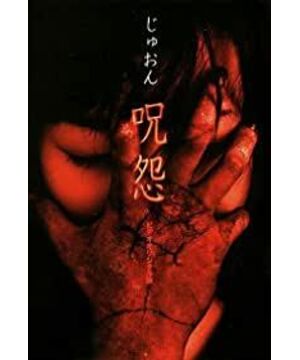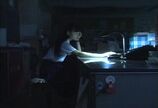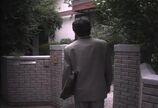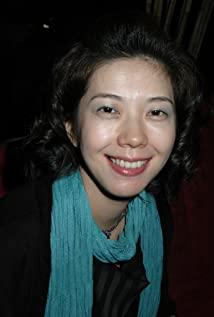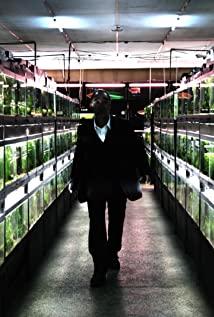Let's take a look at how many versions of The Grudge are available. The first is that the TV version in 1999 has two parts 1, 2 and the next is the theater version of 2003 and 2004 is also two parts 1, 2, and the US version of 2004, 2006, and 2009 has three parts 1, 2, and 3. In 2009 Two of the 10th anniversary editions of "White Old Woman" and "Black Girl", and "The Beginning of the End" in 2014. There are a total of 10 parts, except for the third part of the US version, "The Beginning of the End", the rest have the participation of the original film Takashi Shimizu. The TV version 1, 2, the theater version 1, 2, and the US version 1 and 2 are all Shimizu The commemorative version was directed by Chong himself, and the commemorative version was only produced by the producer. There is also a novel version made by Kei Oishi after the theater version, and that's it. In terms of plot, referring to the novel, it can be summarized that there was a family in the past, the male protagonist is called Saeki Takeo, the heroine is called Kawanata Kayako, and another son is Saeki Toshio. Saeki has been diagnosed as suffering from oligospermia, but Toshio already exists. In addition, he accidentally saw Kayako's notebook. The records are all about his former crush Shunsuke Kobayashi. Suspecting his wife had an affair, he brutally killed his wife in a rage. And Junxiong, who was only 6 years old at the time, was shut in the closet, and the door of the closet was sealed with tape, resulting in Junxiong being starved to death. Maybe, it was his own son after all...) and killed a black cat Xiaoma of Junxiong. Although Kobayashi had always been the object of Kayako’s secret crush and was her university classmate, in the end Kobayashi still stayed with Manami Midorikawa in the same class. Saeki Goyo, who had killed Kayako, came to Kobayashi’s house and planned to take revenge on Kobayashi’s house, but it happened that Kobayashi went to Saeki’s house because Toshio, who had already become a ghost, turned into a human and came to Kobayashi’s class. Come to class. So Xiaolin decided to visit home. Saeki brutally killed Manami, who was already pregnant, and also took down the unborn child. After all this, Saeki took the phone outside to his home (there are also some debates online here, why not call at Kobayashi's house, I just want to say don’t care about these details...) The one who answered the phone was Kobayashi, when Saeki was on the phone. After Gangxiong told Xiao Lin what he had done, Xiao Lin sat on the ground out of surprise. This is Kayako, who has turned into a ghost, climbed down the stairs and "carried" Kobayashi away. . Jia coconuts have improved...). After the phone call, Saeki Takao was also killed by the Kayako who appeared on the road. Some...) So far the source of time is over. As long as you know this, the rest will be easy to understand. Except for "Black Girl" and "White Old Woman", they all talk about a series of incidents in which Kay and Junxiong killed and broke into the haunted house. This article mainly talks about Gaya Coconut. About Gaya Coconut, there is a detailed introduction in the novel. Because his parents are often absent, Jia Yuzhi is withdrawn and unpopular at school, often alone. Coupled with the fact that Xiao Lin, whom he has always had a crush on, doesn't like him, this makes his resentment deeper and deeper. She began to resent everything in this world. According to the novel, the smaller the circle of a person, the easier it is for resentment to squeeze. Just like a container, the thinner it is, the easier it is to fill up and overflow, and so does resentment. Think about it carefully, why is Jia coconut like this? The society is cruel, and she doesn't give people a chance. This reminds me of the thousands of left-behind children in China. Are they not alone in their parents’ loneliness? Doesn't this teach us a lesson? Caring for left-behind children should not be a blank check. We should take real action, and so should the government. I don't like the role of Jia Yu in the movie, because she kills people when she sees them. But after reading the novel, I began to sympathize with her again, and I started to like this character. At the beginning of the novel, Jia Yuzhi's self-report, even more changed my previous view of her. If you read the novel, it's not difficult to understand that Jia Yao did that. As a result, Kayako’s self-report at the end of the novel is very beautiful, and the scenery is so different from the movie. Maybe Oishi Kei also sympathizes with Kayako’s experience. Just think about it, if Jia Yuyu’s parents have been by Jia Yuyu's side, making her feel the parental love and motherhood that she had missed before, and her classmates are also very friendly and actively communicate with her, then would she still be like that? Kayako is the epitome of the Japanese people, because she is often abused by her husband. It is said that when Shimizu Takashi was filming "The Grudge", the incidence of domestic violence in Japan remained high. Kayako represents the vast number of women who have been mercilessly abused by their husbands. They can only swallow their voices under their husbands, because they cannot resist because of coercion. Jia Yu is the abbreviation of the Chinese people. Thousands of parents keep their children at home because of the housekeeping, and go to work in remote places by themselves. My parents also went to work outside when I was in elementary school, and I know that it feels uncomfortable. Every night like mom and dad, they can only secretly wipe their tears in the quilt, very helpless. Just like Kayako, we sometimes hate this society. Why don't others have us? Why can't we be as comfortable as some people? We who have been tortured by society have no other way but to endure it, breaking our teeth and swallowing them in our stomachs. Whether it’s positive textbooks or negative textbooks, Gaya coconut made us aware of this problem, doesn’t it? I hope we can face the cruelty of the society and strive to make our lives better than before. In fact, apart from these, Jia coconut brings us much more. Looking at the film "The Grudge" again, it is more like a questioning of the lack of human nature, the enlightenment of social phenomena, and the fading of horror. The rest may be the thinking brought by the film itself, right? As Baidu Baike said, the film lacks scenes of punishing evil with good. But think about it carefully, if there is such a scene, is "The Grudge" still the "The Grudge"? Will it still be as hot as it is now? If there is no evil, how can we think of good? "The Grudge" was unprecedentedly successful that year, so that it was seen by Hollywood, and invited Takashi Shimizu to remake the American version of The Grudge (1 and 2 were directed by Shimizu Takashi, as for the third part, I have seen 1 or 2 It's not bad, just ignore the third part...) At this point, I can't help but think of the depressing domestic horror film, alas, it's not a level. . . Japanese horror movies are really not covered, and it is not an exaggeration that Asia or even the world is leading. After the baptism of the grievance, school is about to start. The school used to watch make-up classes every night, and it felt different every time. Last night I also dreamed of Jia coconut... I felt very kind. Maybe I really understand this role.
View more about Ju-on: The Curse reviews


